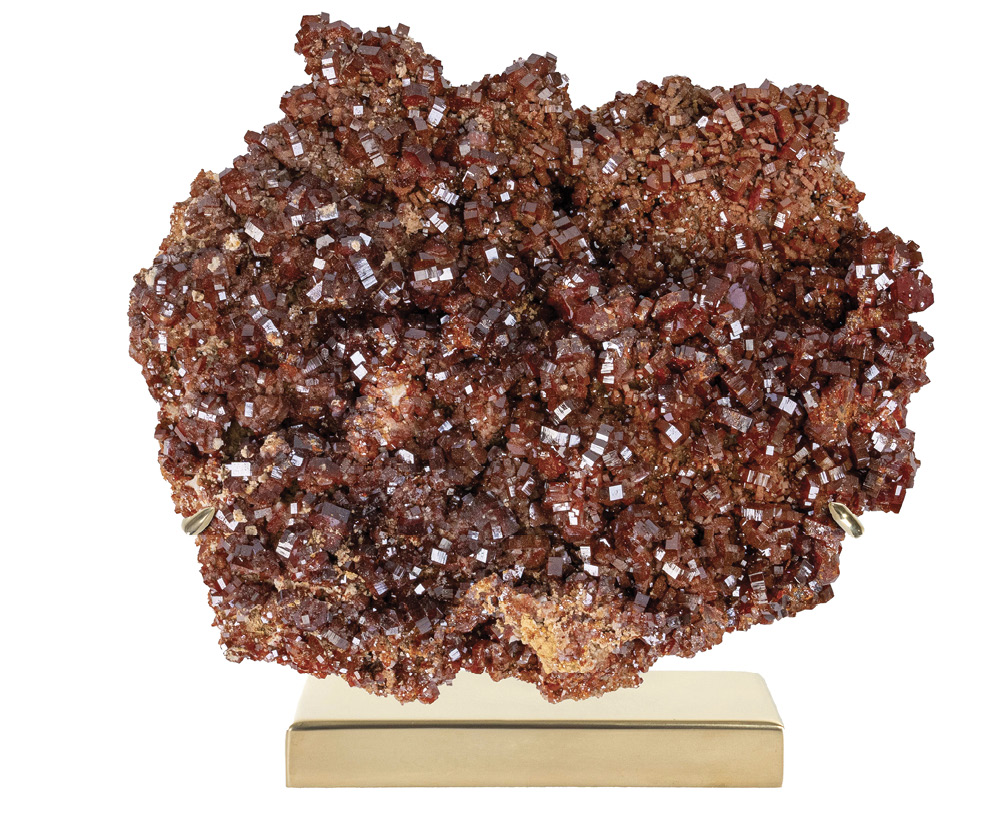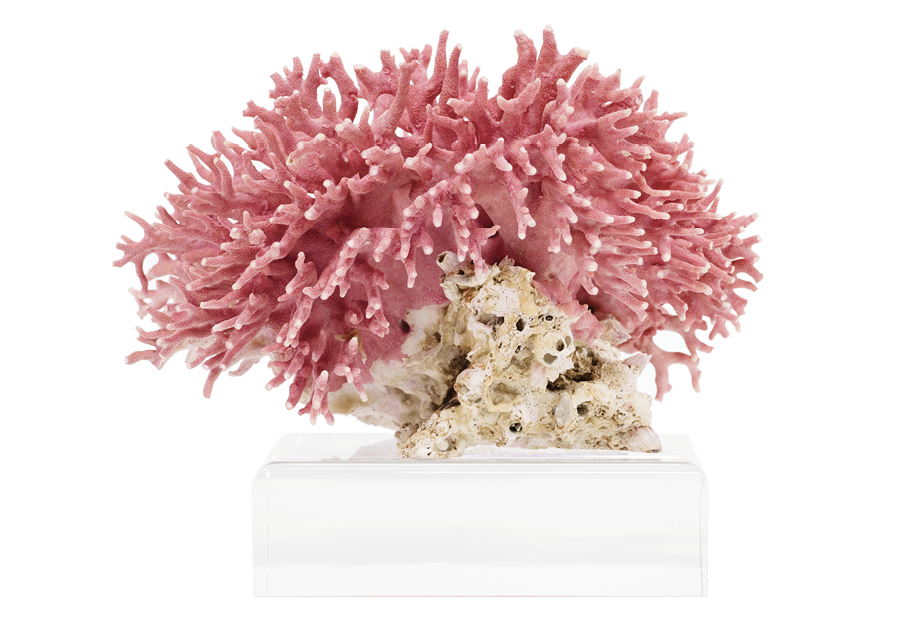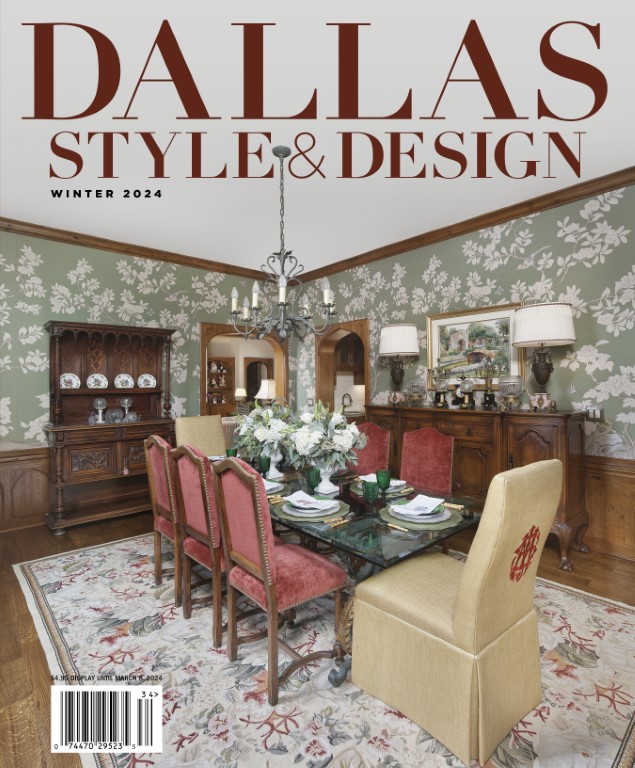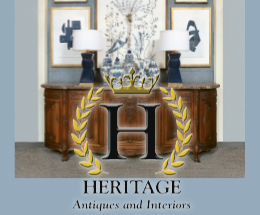
Alongside modified perceptions of the global market, high-end minerals, corals and fossils have experienced a significant increase in value and desirability over the past few decades and are no longer regarded as simple decorative accessories. Now viewed more as pieces of art, priceless collectibles and unique investments, the finest of these natural specimens are coveted as invaluable displays of finery and exclusive splendor.

By leaps and bounds, the new norm for these natural specimens has placed them on a similar tier and comparable value to renowned Picasso paintings or Giacometti sculptures. But with the conflicting shifts in supply and demand in natural specimens, ethical sourcing has often been disregarded in favor of obtaining them—especially in those that are rare or difficult to procure. That being said, legal and ethical acquisitions are prioritized and paramount for our company.
Prior to 1997, even the most valuable fossils typically sold for no more than a few hundred thousand dollars. However, this changed in October 1997 when Sue the Tyrannosaurus rex was publicly auctioned and sold for $8.3 million. In the years to follow, commercial paleontology became a popular trend due to its highly publicized nature and the lucrative outcome of certain iconic sales. About two decades later, record-breaking prices for dinosaur fossils were recorded in Stan the T. rex in late 2020 for $31.8 million and Big John the Triceratops in late 2021 for $7.7 million. Both made their homes in private collections despite their publicity.

However, there have also been quite a few sales of extraordinary specimens the public is unaware of due to the private nature of various behind-the-scenes deals. Museums have historically monopolized the market for natural specimens, but in recent years, private collectors have dominated the market. In certain cases, private collectors may loan or donate their specimens to a museum, although more often they decide to keep them within their home, office, vault, etc.
This is exemplified in a memorable private sale of a juvenile T. rex skull that our company procured from a group of fossil diggers that had excavated and prepared the fossil. We contacted a select few museums and private collectors with the means to purchase such a valuable piece, and within a few days of its initial availability, the juvenile T. rex skull was immediately purchased.
But the increase in the exclusivity and value for certain specimens is also the result of stricter laws and regulations many countries and states have enforced, which has made it more difficult or outright illegal to export their fossils and minerals. Due to these laws, there are not as many high-end specimens that can be legally acquired today. Thus, the specimens that were exported prior to the change in laws, or have been granted special permissions, have become even more prized.

Our company takes these matters very seriously, which is why the Department of Homeland Security often seeks our professional services in verifying the authenticity and legality of specimens. We recently sold a saber-toothed cat skeleton that was discovered in Peru several decades ago and had been transported to the United States prior to laws being enacted that prevented their export. And we also recently acquired an extraordinary fossilized woolly rhinoceros skull with authentic horns from Russia, which spent months being processed in customs to ensure that it was not of modern rhino material. In these instances, as it is with any sensitive material that we handle, we have and will continue to ensure that all proper documentation is in order and the relevant laws are followed.

This is not exclusive to our dealings with fossils. Many corals have experienced a scarcity in the market by being appropriately protected. We have also made it a point to follow the laws of CITES and the U.S. Fish and Wildlife Service and ensure that none of our corals were killed to be collected, and instead died of natural causes, such as environmental fluctuations and tropical storms. So, it has been intriguing to see our exquisite pink and lavender California hydrocorals, as well as several other coral varieties, skyrocket in value since our company first purchased them years ago. Similarly, with minerals there is a lucrative aspect to black-market smuggling that has become infamous in certain regions, although we have strived to only connect with sources that abide by legal channels, mining conflict-free minerals.
In essence, the exclusivity, desirability and value of natural specimens has been greatly bolstered in recent years largely due to the aforementioned circumstances. These high-end specimens will continue being excellent investments and phenomenal statement pieces in residences, corporate offices, museums and private collections all over the world.
Micah Gilbert, owner of Empressive Earth Gallery, is a geologist, paleontologist and gemologist with a trained eye for meticulously sourcing high-quality specimens that make for exquisite décor.













